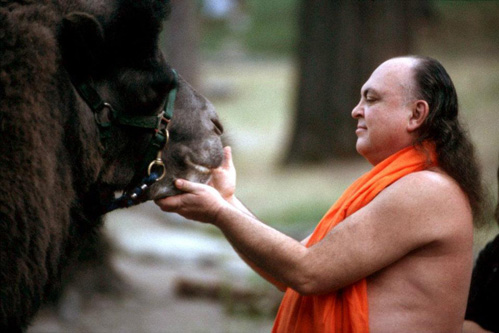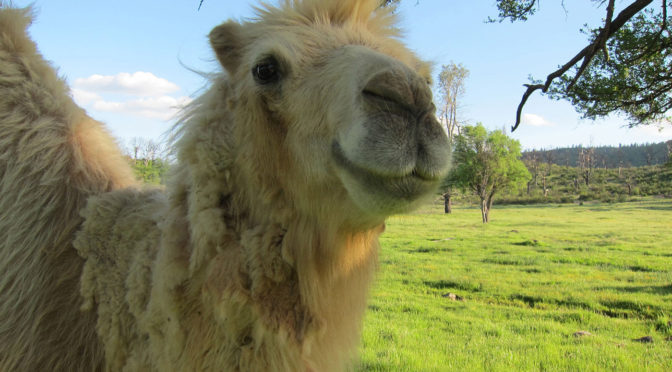The name Fear-No-More Zoo was given by Adi Da Samraj for two important reasons.
The first is that non-humans, in comparison to most humans, dwell primarily in a state of spiritual contemplation. They do not live in chronic fear or anxiety. If disturbed, they respond to the situation in the moment but then quickly return to a state of equanimity and natural contemplation once the threat has passed.
Second, the name Fear-No-More points to our obligation to care for animals in captivity in a sensitive, responsible, and loving way, with all of their requirement provided for, such that they need “fear no more.” As Adi Da Samraj emphasized:
“If you’re going to bring animals into your sphere and take them out of theirs, you have to make some sort of arrangement with them in which they have the potential, through their contemplative life, to be just as happy as you want them to be.”
Doing this provides the animals with a uniquely served circumstance in which they have the freedom to live and contemplate, in healthy environments, with minimal concern for survival.
We are a nonprofit 501c(3) organization funded entirely through individual donations. All of the money donated goes toward our ongoing, basic expenses which directly support the animals. These include hay, grain for treats and training, special supplies such as pine shavings for Peaceful Baba’s bed (the elder camel), salt and minerals, hoof trimming, veterinary care, infrastructure, repairs, and continuing education for staff. In the future we hope to raise monies to upgrade our facilities and infrastructure in order to ensure safely hosting visitors.
Jingle Baba was the first camel in the herd, and marked the beginning of Adi Da’s Fear-No-More Zoo. Jingle Baba was purchased from the London Zoo in 1989 and brought to The Mountain of Attention Sanctuary in northern California. Eventually Adi Da requested a mate for Jingle Baba and Google Mama was purchased. They had three offspring—Peaceful Baba, Purnimama, and Jelly Baba (all of the camels were named by Adi Da). Soon after, a small group of camels was purchased, and, over time, the rest of the herd was bred and grew into the large family they are today.

“Jingle Baba is an extraordinary individual.”— Adi Da Samraj
The camels have a beautiful 200-300 acre valley in which they can freely roam. The horses have two paddocks that are 5 and 3 acres but they often come out to wander beyond the paddocks. The llamas have about a 1/4 acre enclosure.
Camels graze and browse on all kinds of flora. They graze their valley in the spring and summer months and also take to the hills to browse the oak shrubs and chaparral. In addition to their grazing and browsing, we feed the herd 1-2 bails of orchard, timothy, or meadow grass hay a day.
At the present time we are not breeding animals, all of our males are gelded.
Camels typically begin shedding their winter wool in May. It takes about a month before each camel is down to “pigskin.” Last year we were able to hand-comb every camel except for one who remains reserved around combing. This is one of the best times of the year for bonding with the camels as they really appreciate the combing sessions and removal of the hot wool to make their bodies more comfortable. All of the wool gets collected in large bags and eventually we hope to produce wool products.
When a camel sits down, it is called kushing.

